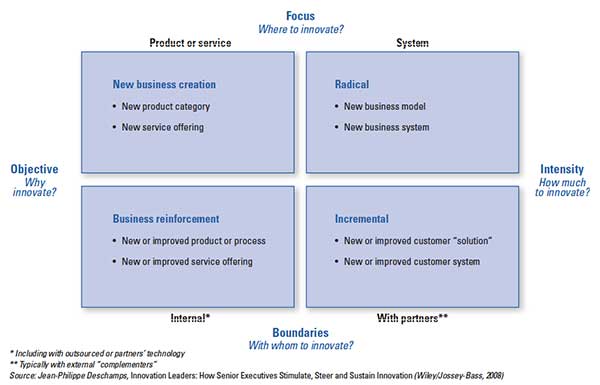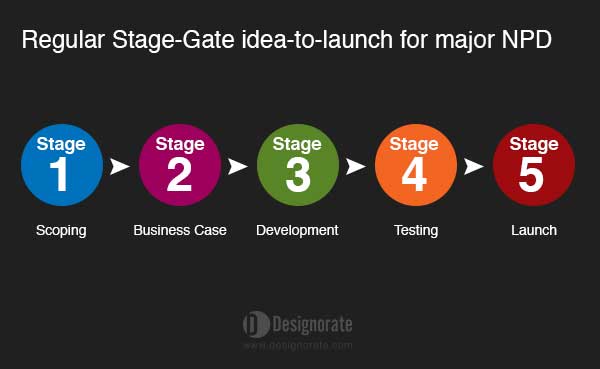Turning strategic innovation Into Profit: Tips and Practices
Innovation plays an essential role in a company’s success in the market. Large enterprises such as Apple, IKEA, Lego, Johnson & Johnson and others are paying much attention to innovation and leading the market with new products and solutions. Many of the leading companies have a dedicated research infrastructure to facilitate the process.
A few days ago, I was reading an interesting white paper by Dr. Robert G. Cooper, Winning at New Products: Pathways to Profitable Innovation. The white paper is based on a study undertaken by the author and the American Productivity & Quality Center in Houston. In the United States, almost half of the CEOs consider innovation a high priority in business success. In a recent Cheskin & Fitch Worldwide study, innovation is considered the first factor to lead profitability and growth in European companies. Factors such as cost cutting and mergers and acquisitions come next.
Most successful business leaders in the world put innovation at the top of their strategic thinking. Having a solid innovation strategy contributes to the success of the fastest-growing companies. Additionally, successful entrepreneurs believe in creativity and the value of creative ideas. These ideas lead the innovation process.

Through Innovation)
However, the same study found that only one innovative product concept out of seven turns to a successful product in the market. This leads us to ask what are the factors that contribute the success of a new product? And how are we to implement innovation into a holistic business strategy.
Myths about strategic innovation
Generally, there are two types of managers; the one who believes that innovation can lead the business to success and the other who believes it can lead to collapse. Why are some managers afraid of innovation and accepting change?
What are the reasons that drive some managers to think that innovation and change may lead to market fail and subsequent loss of profits and market share? Below are the commonly shared reasons between some managers toward the innovation process:
Innovation costs too much
One of the biggest obstacles to apply innovation inside companies is the belief that the innovation process costs too much. Most of the short-term-thinking companies that run on a tight budget loop avoid to increase the expenses spent on researching for new products or services.
This is true that the innovation process requires extra costs that do not lead to direct profit. However, innovating a new product can help those struggling companies to lead the market and increase profitability compared with the existing situation of the company.
Innovation takes time and resources
The innovation process requires time and resources including dedicated working hours and employee training. However, the successful implementation of the innovation process can lead to more prosperity for company in the long run.
Evaluating the company’s progress indicates that many companies spend time and resources in items that are in a lower priority than innovation. Allocating these resources in an integrated innovation process can help companies to have a better position in the market.
Innovation is risky
Can innovation lead to business collapse? While managers may reject the innovation ideas because they afraid of failure, the different models of the innovation processes aims to reduce the risk and ensure that innovating new products are based on solid and intensive research and study for the market.
How to achieve profitable strategic innovation
Successful innovation processes can lead to a direct increase in profitability. In order to achieve this goal, specific tips can be considered based on the experience and observation of successful entrepreneurs:
Implement disruptive innovation
There are two type of innovation; disruptive and incremental innovation. Disruptive innovation aims to create major changes in the product or service to open new market opportunities. Incremental innovation aims for gradual improvement of existing products without major changes or innovating new products.
Unlike incremental innovation, disruptive innovation creates opportunities through new products and services. In order to achieve profitable innovation, disruptive innovation should be implemented as part of the company strategy.
Apply innovation strategy
Although some ideas are creative and innovative, they may fail to achieve its way to the market or increase profits. The creative ideas is not enough though. Aside from the creative products and ideas, an innovation strategy and process should be implemented to ensure success in the competing market.

Most of the innovation processes include the following stages: scoping the innovation strategy, researching, developing, testing and evaluation. One of the successful innovation process models is the Stage-Gate idea-to-launch discussed in the Dr. Robert G. Cooper’s white paper, Winning at New Products: Pathways to Profitable Innovation.
Involve your customer
Innovation and new product development aims to solve people’s problems and fulfill their needs. In order to achieve this goal, consumers should be part of the innovation process. Getting feedback from the consumers helps finding new ideas either to create new products or improve existing ones.
While creative thinking can drive ideas to new products or services, the end consumer is the best person to know his or her needs. Therefore, consumer feedback is involved in two stages of new product development (NPD); the research stage and subsequent testing and evaluation.
The research stage in the innovation process involves a number of tools for understanding user behavior and needs through user groups, surveys and interviews. Testing and evaluating the new product should include consumer involvement to get feedback such as prototypes and beta testing groups.
Build innovative environment
In order to achieve innovation that drives profit, the organizational environment should support innovation and creativity to stimulate the employee’s creative thinking. Building an innovative culture inside the organization requires putting innovation as part of the company’s holistic strategy in order to apply the creative essence to all the companies’ activities.
Enhancing the challenging attitude between employees and applying management methods to fuel ongoing innovation helps in keeping the innovation strategy active through all organizational levels.
Support creative thinking
Applying creative thinking in company meetings supports the innovative environment inside the organization and help employees to think outside the box. Many tools can be used to fuel creative thinking in the organization such as the Lego Serious Play, Six Hats of Thinking, Reverse brainstorming and others.
Creative thinking helps expand the innovative attitude along the organization instead of locking the innovative process to specific skilled or talented users. Getting feedback and ideas from a broad number of employees and team members can help fueling the innovative process.
Use external innovation service
If the company is not able to handle the innovative process because of internal barriers, external support may be requested. Some companies outsource the innovative process in order to get a professional output. These external resources such as design agencies and marketing research companies help to innovate products without interrupting the company’s ongoing project development.
There are barriers that prevent companies to innovate new products such as the lack of experience, time and resources. In this case, external innovation support may be used to overcome these barriers. External innovation agencies work in partnership with the company to build a new product or service based on intensive study for the market needs and challenges.
Conclusion
The innovation process can lead a business to achieve more profit and prosperity. However, many barriers prevent companies from applying a successful innovation strategy. These barriers can be due to internal and external factors. In order to achieve the goal of the innovation process, specific guidelines should be considered such as applying an innovative strategy and the choice of disruptive innovation rather than the incremental innovation.
External innovation consultancy can be one of the methods that help companies to build new products and services without limiting the internal process while overcoming barriers such as the lack of skills and/or resources.
In sum, leading companies were able to achieve superiority in the market by innovating new products and services. Small and medium enterprises (SMEs) can still apply innovation strategy to increase profitability overcoming all the barriers.
External resources
Cooper, R. Winning at New Products: Pathways to Profitable Innovation [Accessed: March 2015]
A. T. Kearny. Profitable Growth Through Innovation [Accessed: March 2015]






